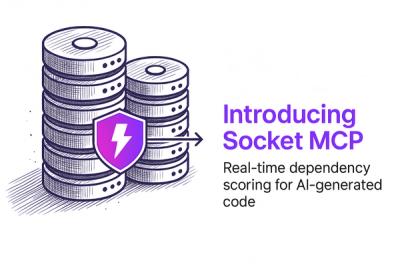
Product
Secure Your AI-Generated Code with Socket MCP
Socket MCP brings real-time security checks to AI-generated code, helping developers catch risky dependencies before they enter the codebase.
Ruby wrapper of MathGL, made using SWIG.
MathGL is a library for scientific data visualization developed by Alexey Balakin.
(This package is under construction.)
Install MathGL2 library: http://mathgl.sourceforge.net/
Install Ruby/MathGL from source:
ruby setup.rb config -- --with-mathgl-dir=/usr/local
ruby setup.rb setup
ruby setup.rb install
Or install with gem:
gem install mathgl -- --with-mathgl-dir=/usr/local
Write a plot to PNG file:
require 'mathgl'
prc = proc{
x = (0..100).map{|i| i*0.1}
y = x.map{|i| Math.sin(i)}
set_ranges(0,10,-1,1)
box
axis
plot(x,y)
}
gr = MathGL::MglGraph.new
gr.instance_eval(&prc)
gr.write_png("test.png","",false)
Display a plot on Qt window:
require 'mathgl'
prc = proc{
x = (0..100).map{|i| i*0.1}
y = x.map{|i| Math.sin(i)}
set_ranges(0,10,-1,1)
box
axis
plot(x,y)
}
qt = MathGL::MglQT.new(&prc)
qt.run
git checkout -b my-new-feature)git commit -am 'Add some feature')git push origin my-new-feature)FAQs
Unknown package
We found that mathgl demonstrated a not healthy version release cadence and project activity because the last version was released a year ago. It has 1 open source maintainer collaborating on the project.
Did you know?

Socket for GitHub automatically highlights issues in each pull request and monitors the health of all your open source dependencies. Discover the contents of your packages and block harmful activity before you install or update your dependencies.

Product
Socket MCP brings real-time security checks to AI-generated code, helping developers catch risky dependencies before they enter the codebase.

Security News
As vulnerability data bottlenecks grow, the federal government is formally investigating NIST’s handling of the National Vulnerability Database.

Research
Security News
Socket’s Threat Research Team has uncovered 60 npm packages using post-install scripts to silently exfiltrate hostnames, IP addresses, DNS servers, and user directories to a Discord-controlled endpoint.